

William Stopford
The cars axed in 2025 that we'll miss the most
15 Hours Ago
The fully-loaded Polo Style is not-so-mini Golf in terms of space, tech and refinement, though its price is within touching distance of its sibling - which is probably its biggest downfall.
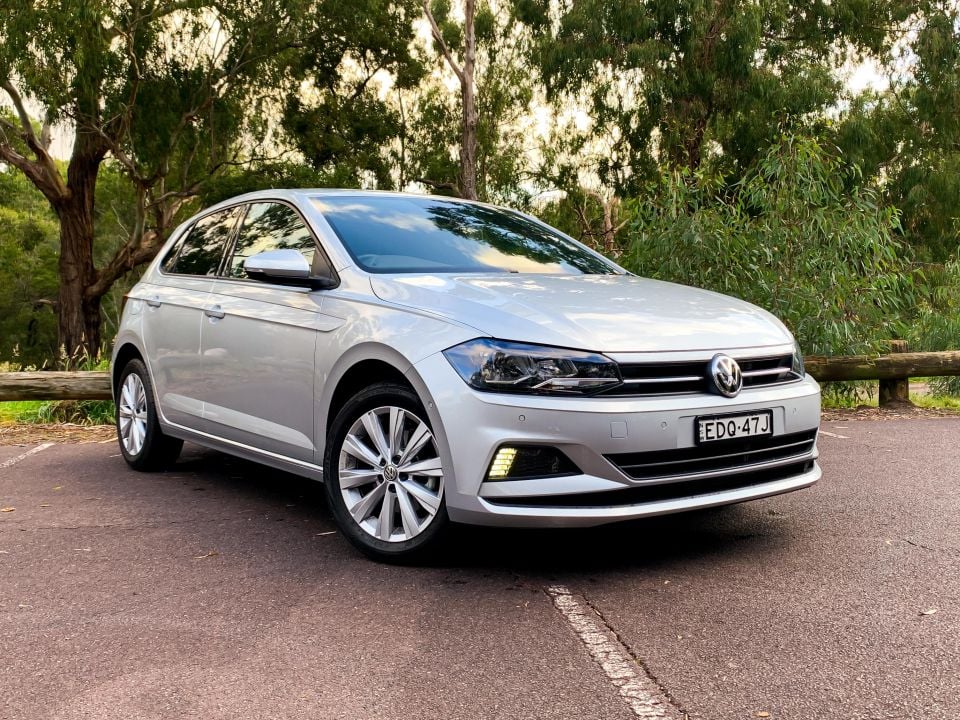


Marketplace Editor
New from
$25,690
excl. on-roads

Marketplace Editor
New from
$25,690
excl. on-roads


Marketplace Editor
New from
$25,690
excl. on-roads

Marketplace Editor
New from
$25,690
excl. on-roads
Quickly see how this car stacks up against its competition. Select any benchmark to see more details.
Where expert car reviews meet expert car buying – CarExpert gives you trusted advice, personalised service and real savings on your next new car.
Like its iconic Golf sibling, the Volkswagen Polo has been known for adding a touch of class within its competitive set.
Now in its sixth generation, Volkswagen’s light hatchback is more of a ‘mini-Golf’ than ever – in fact, it’s roughly the size of a Mk5 Golf.
However, with SUVs gaining an increasing amount of attention from the German brand as well as the overall industry, passenger vehicles like the Polo are falling off the radar for new car buyers, which is a crying shame.

While small and medium crossovers continue to boom in the Australian market (global pandemic conditions aside), it’s all too often the equivalent hatchback or sedan offers equivalent practicality, better on-road manners, and sharper pricing.
Here, we’re testing the Volkswagen Polo Style 85TSI Style. It’s the flagship of the standard Polo range, if you discount the GTI hot hatch, and competes with everything from the Mazda 2 and Kia Rio to the related Audi A1 and Mini Hatch.
Should you be considering this as your next car? Let’s find out.
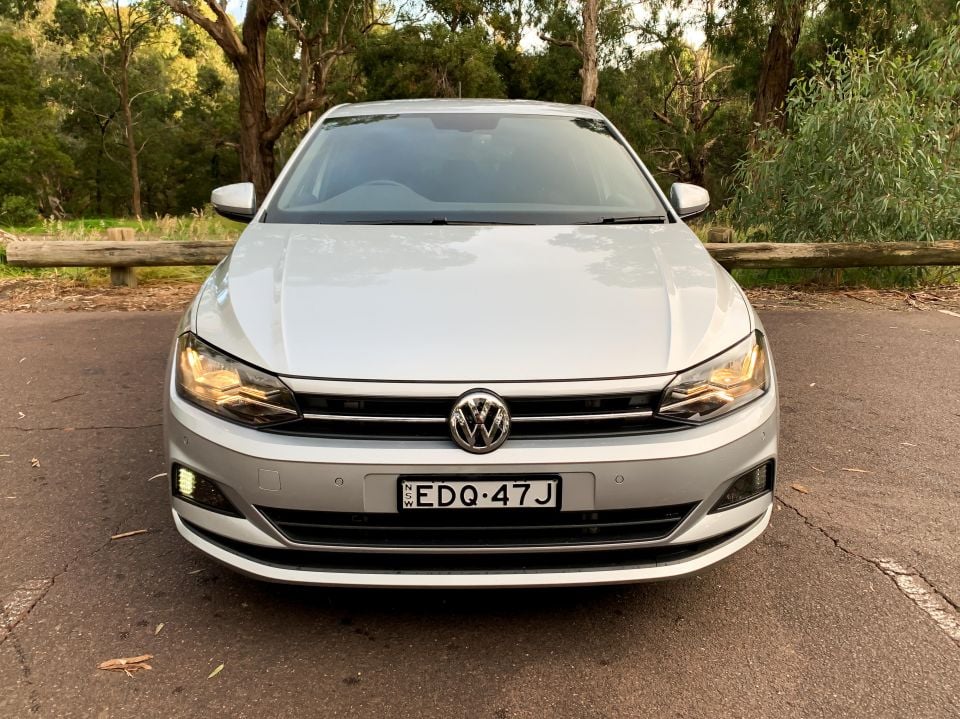
The Volkswagen Polo line-up kicks off at $18,990 before on-road costs for the entry-level 70TSI Trendline manual, with this top-spec auto-only 85TSI Style priced from $25,390 before on-roads.
On the road, that works out to just over $29,000 – though Volkswagen Australia is constantly running special drive-away offers.
At the time of writing, you can get the Polo 85TSI Style from $26,990 drive-away. This offer is available until June 30.
Our tester is optioned with Reflex Silver metallic paint ($600), as well as the driver assistance package ($1500) which brings high-tech systems such as adaptive cruise control with stop&go, blind-spot monitoring with rear cross-traffic alert, an automated Park Assist system, power-folding side mirrors, and a proactive occupant protection system.
All up, the vehicle you see here is $27,490 before on-road costs or just over $29,000 drive-away using the current drive-away offer as a guide.
That puts it at the pointy end of the mainstream light car segment. Mazda’s top-spec 2 – the GT – is priced from $25,990 before on-road costs, and the upcoming all-new Toyota Yaris is expected to move upmarket in terms of pricing with the availability of hybrid power and a full suite of active safety systems.
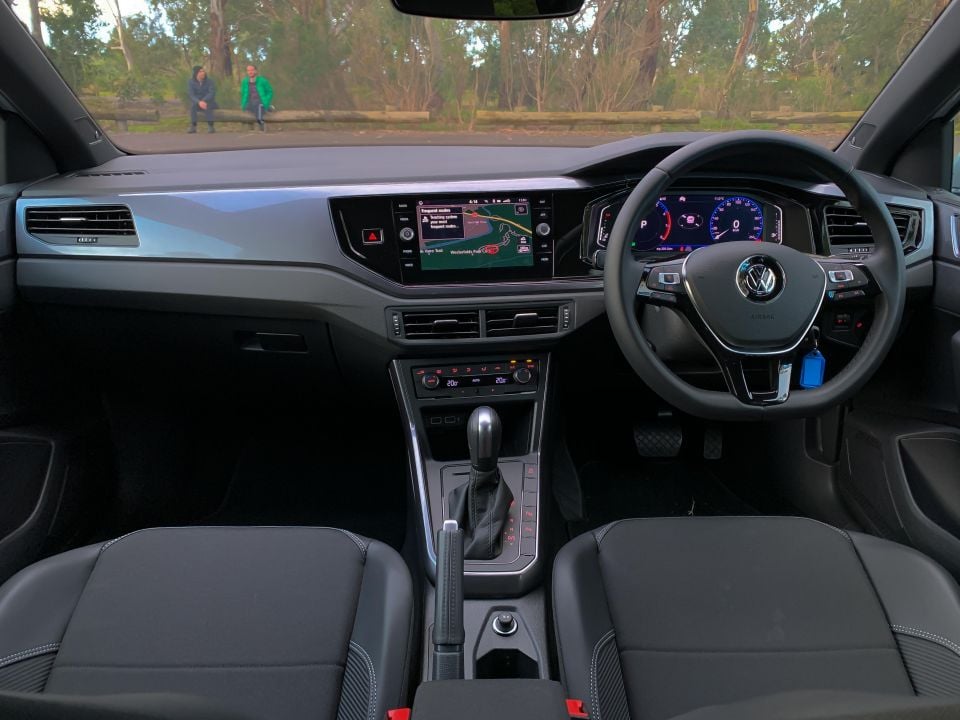
Buy your new car without the stress. It's fast, simple and completely free.

Great service from Travis and team, second time I have used this business would not hesitate to recommend them to anyone
Craig C.
Purchased a Ford Ranger in Sunshine Coast, QLD
CarExpert helped Craig save thousands on his Ford Ranger, now let us save you on your next new car.
Find a dealBeing the top specification of the non-performance Volkswagen Polo family, the ‘Style’ grade comes pretty well equipped for your spend.
Key equipment highlights include 16-inch ‘Las Minas’ alloy wheels, a 10.25-inch configurable digital instrument cluster dubbed ‘Active Info Display’, a 300W sound system, native satellite navigation for the 8.0-inch central touchscreen, a wireless smartphone charger, and rear privacy glass.
Other features fitted to the Style grade include dual-zone climate control, ‘Comfort Sport’ front seats with driver lumbar adjustment, front and rear carpet mats, Deep Iron metallic cabin trim inserts, a black headliner, and darkened LED tail-lights.
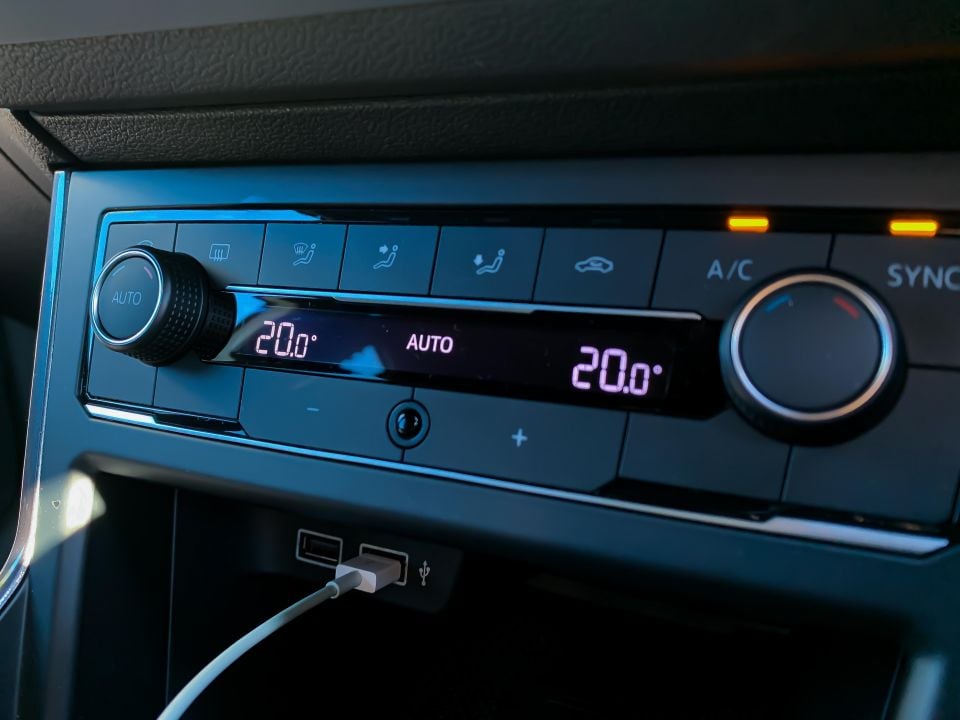
That’s on top of features carried over from lower model grades including automatic halogen headlights, rain-sensing wipers, and auto-dimming rear-view mirror, a front centre armrest, tyre pressure monitoring, a leather multifunction steering wheel, an 8.0-inch central touchscreen with Apple CarPlay and Android Auto, and electrically heated and adjustable side mirrors.
However, there’s no LED headlights available, even as an option, nor is there any form of lane support system like lane departure warning or lane-keep assist.
It’s also a shame you can’t get contrasting roof options or specify colourful cabin trim inserts like you can overseas.
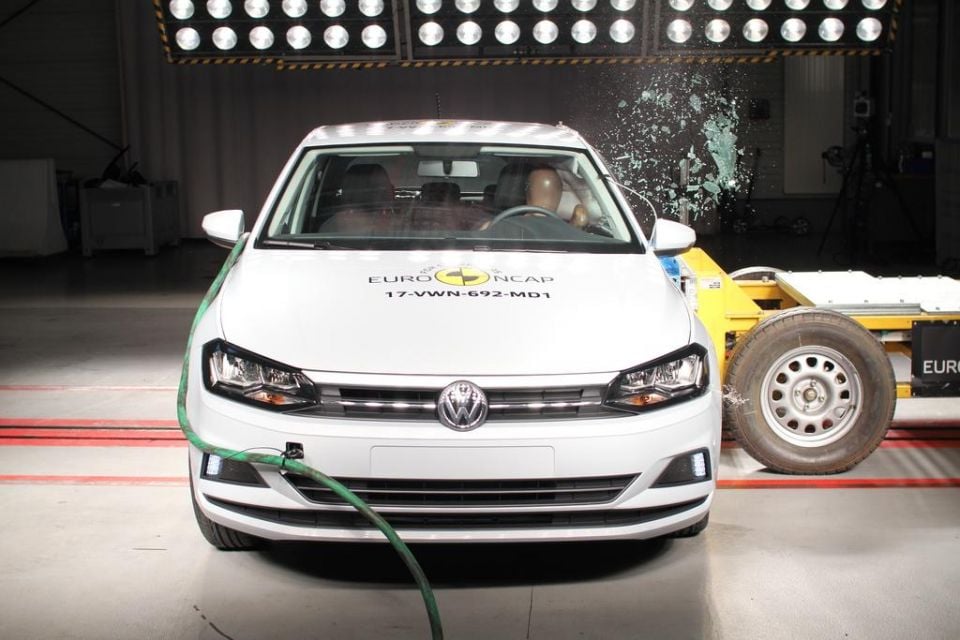
The Volkswagen Polo was awarded a 2017-stamped five-star ANCAP safety rating, based on tests carried out by Euro NCAP.
In terms of individual crash test categories, the Polo managed 96 per cent for adult occupant protection, 85 per cent for child occupant protection, 76 per cent for pedestrian protection and 59 per cent for safety assist.
Despite the impressive results for an entry-level car, ANCAP and Euro NCAP reported marginal neck protection for the 10-year-old child dummy in the frontal offset test, and poor pedestrian protection at the base of the windscreen.
The Volkswagen Polo also lost points in the safety assist category for its lack of available lane support system, essentially dropping 25 per cent of the overall score for assistance technologies.
Standard safety systems in the Polo include all-speed autonomous emergency braking (4-160km/h) with pedestrian detection, forward collision warning, driver fatigue detection, a rear-view camera with static guidelines, and six airbags.
As mentioned earlier our test vehicle is specified with the optional driver assistance package which brings adaptive cruise control with stop&go, blind-spot monitoring, rear cross-traffic alert, a proactive occupant protection system and all-round parking sensors which also facilitate the automated park assist function.

It’s no secret automotive journalists typically praise most Volkswagen products for high levels of fit and finish. The Polo mostly lives up to that reputation, with some caveats.
All the touch points are lovely and fittingly ‘premi-ish’ given this is an entry-level city car. The leather-trimmed steering wheel and (manual) handbrake feel lovely to touch, and the dashboard is finished in soft-touch plastics up top and in the middle.
The glossy Deep Iron Metallic trim insert is much nicer than the matte version seen in lower Polo grades, and is less prone to fingerprint marks than say, piano black trims. Front-seat occupants are also treated to padded elbow rests in the doors which are trimmed in textile.
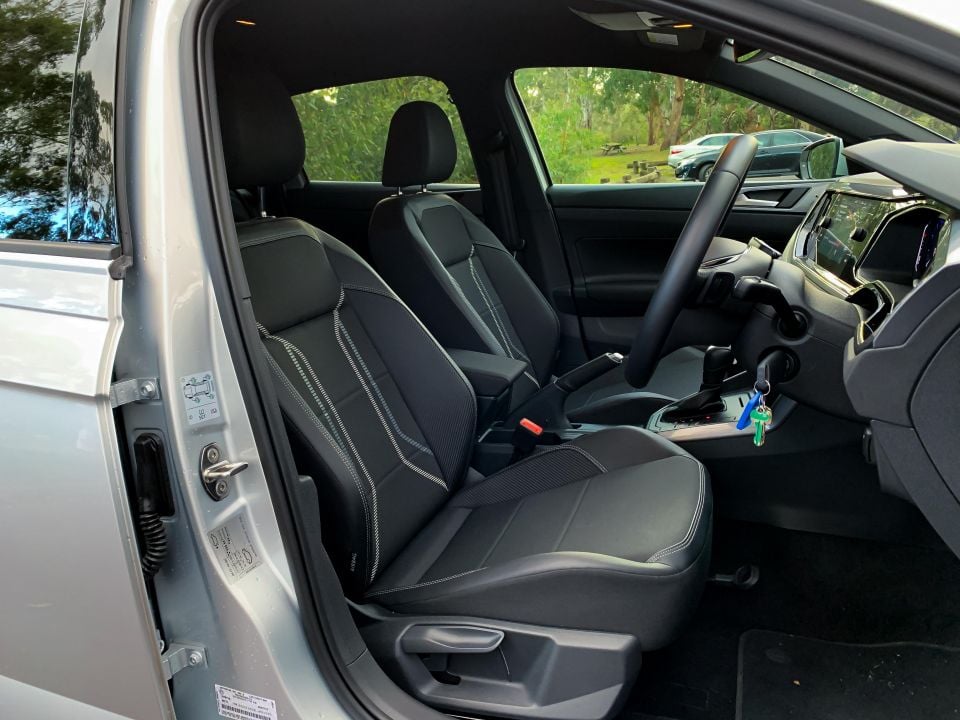
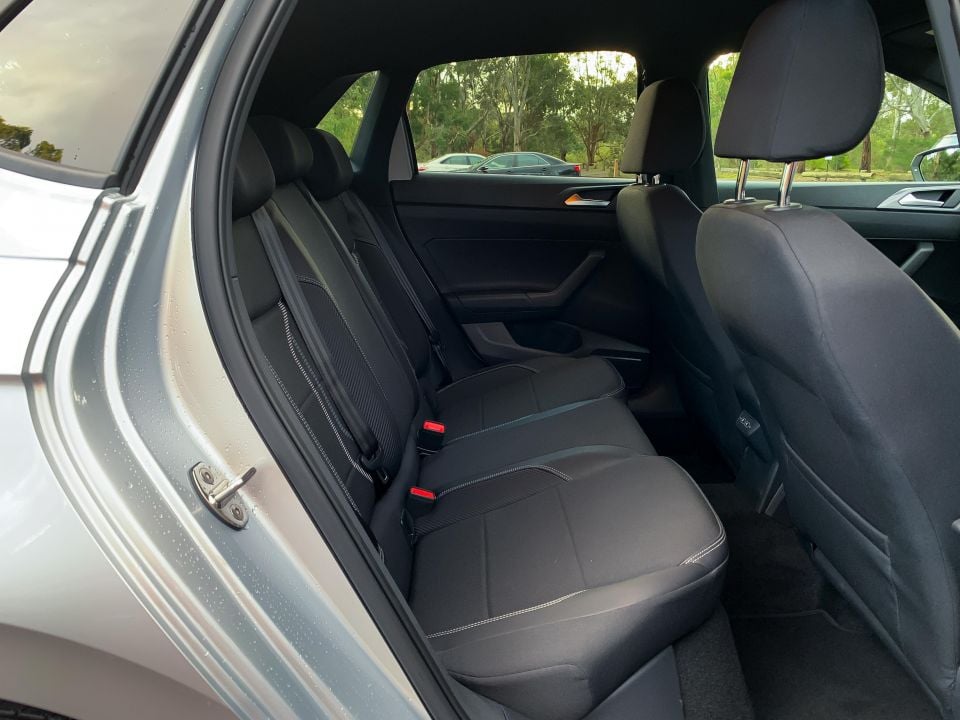
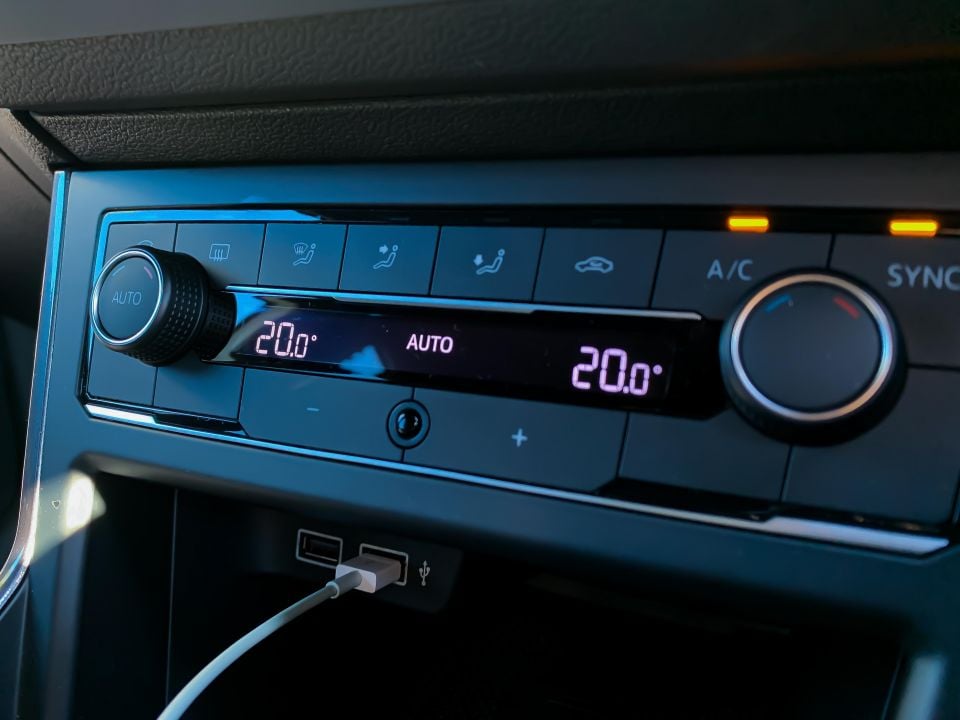
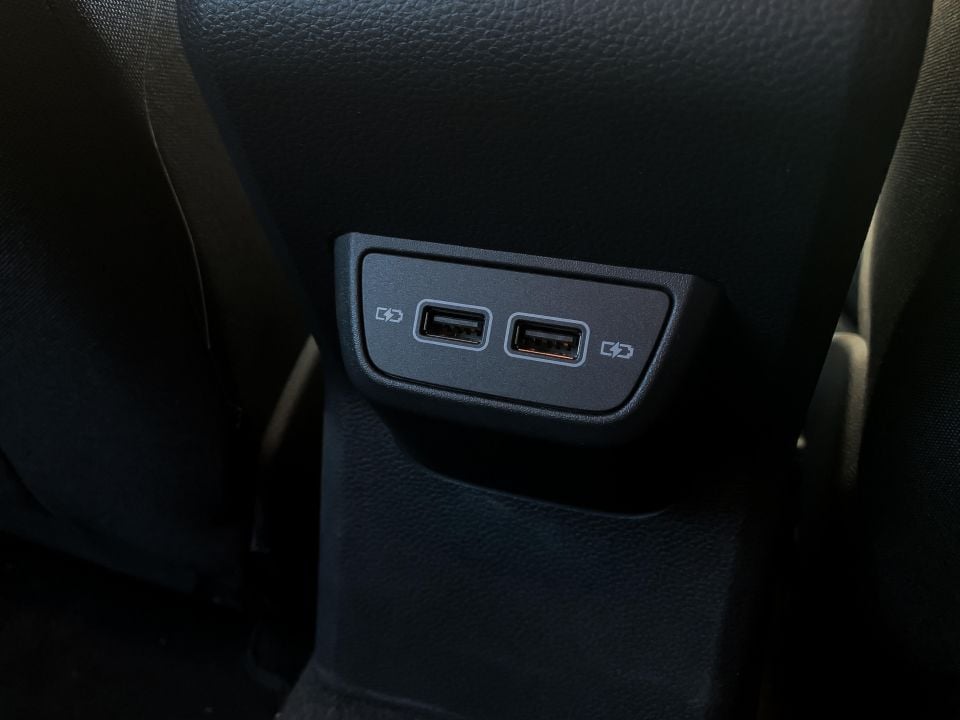
Unique features to the Style grade include dual-zone climate control air-conditioning and a wireless smartphone charge pad, both of which are handy in daily use though at times the air-con can take a while to warm up and heat the cabin up – keep in mind we did this review in Melbourne’s temperamental climate as autumn turns to winter.
However, the premium feel begins to disappear once you start poking and prodding other parts of the cabin, such as the majority of the door trims. The door tops and inner cards are all hard plastic and can shift in areas when you press them. Same goes for the centre stack plastics, which wobble a little bit if you nudge them hard enough.
Relative to the segment it’s hardly out of the ordinary – the Mazda 2 and Kia Rio are pretty much finished with entirely hard and scratchy plastics. But when you can get an entry-level Golf for the same money with similar levels of kit, you can see why it might be a complaint.

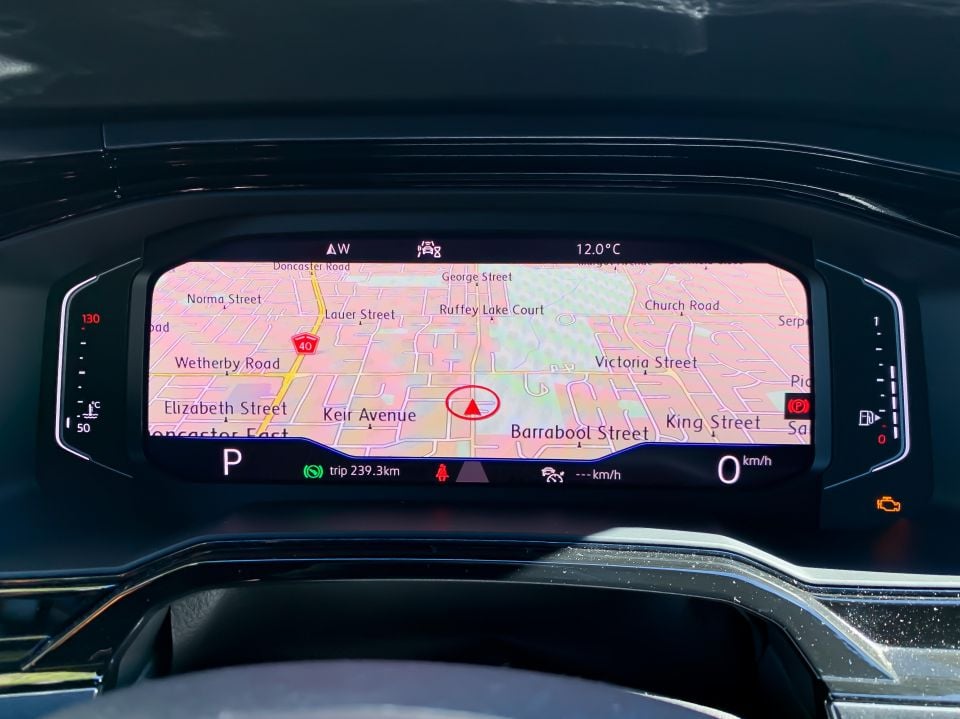

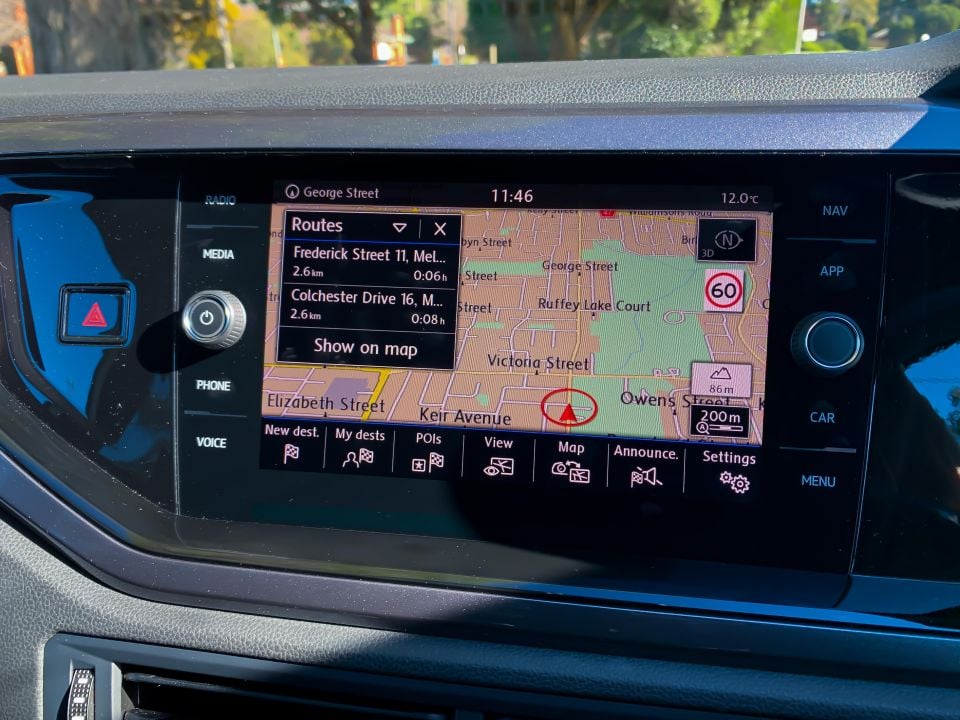
You cannot complain, however, about how lovely the displays are. The Polo Style comes equipped as standard with Volkswagen’s second-generation Active Info Display, measuring 10.25 inches, as well as native satellite navigation for the 8.0-inch central touchscreen which can also be projected into the gauge cluster.
Both screens are high resolution and a real point of difference in the class. Nothing from Japan or Korea can match the Polo’s digital suite, even corporate cousin Skoda hasn’t upgraded its Fabia city car to have these screens nor the newer tech-friendly MQB A0 platform that serves as the basis for the Polo and Audi A1.
Said modular architecture has afforded the Polo’s cabin a wealth of space in the cabin and boot, too. It’s now at the point where it’s more practical that vehicles from the segment above – think Mazda 3 or Toyota Corolla.
I measure just over six-foot one and I can comfortably sit behind my own driving position with ample head- and legroom. Two adults will fit in the second row just fine, and have access to amenities like bottle holders in the doors, map pockets on the front seat backs, and two additional USB charging outlets behind the centre console.
However, there’s no vents to be found like a Golf or Skoda Scala, nor a fold-out centre armrest with cupholders like you’ll find on a similarly-priced Golf Trendline, and the elbow rests in the back doors don’t get the same textile padded trimmings as the fronts.
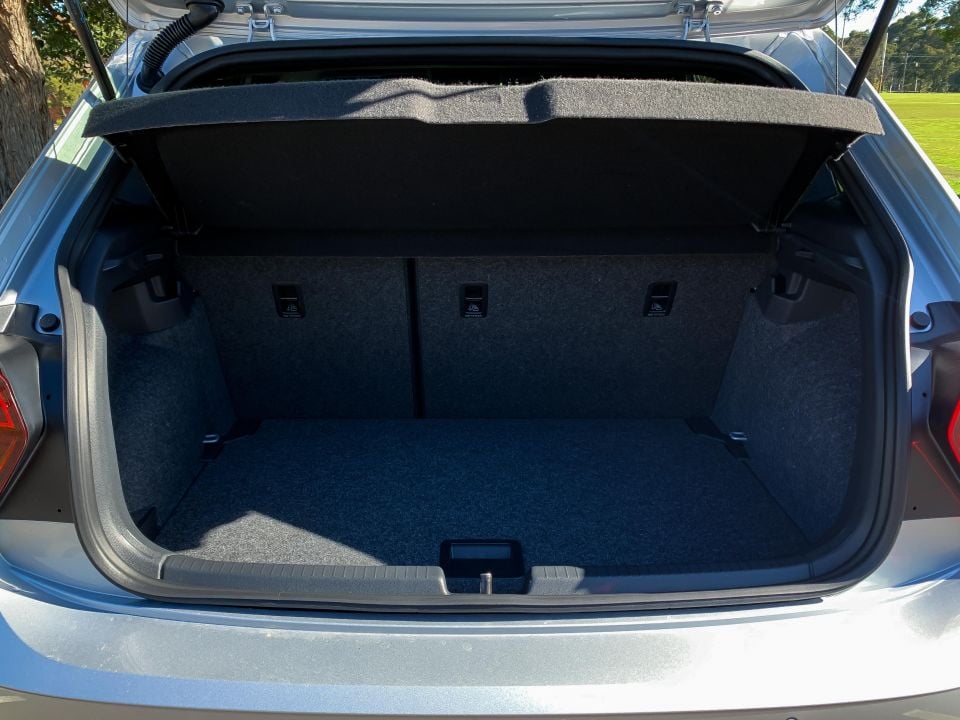

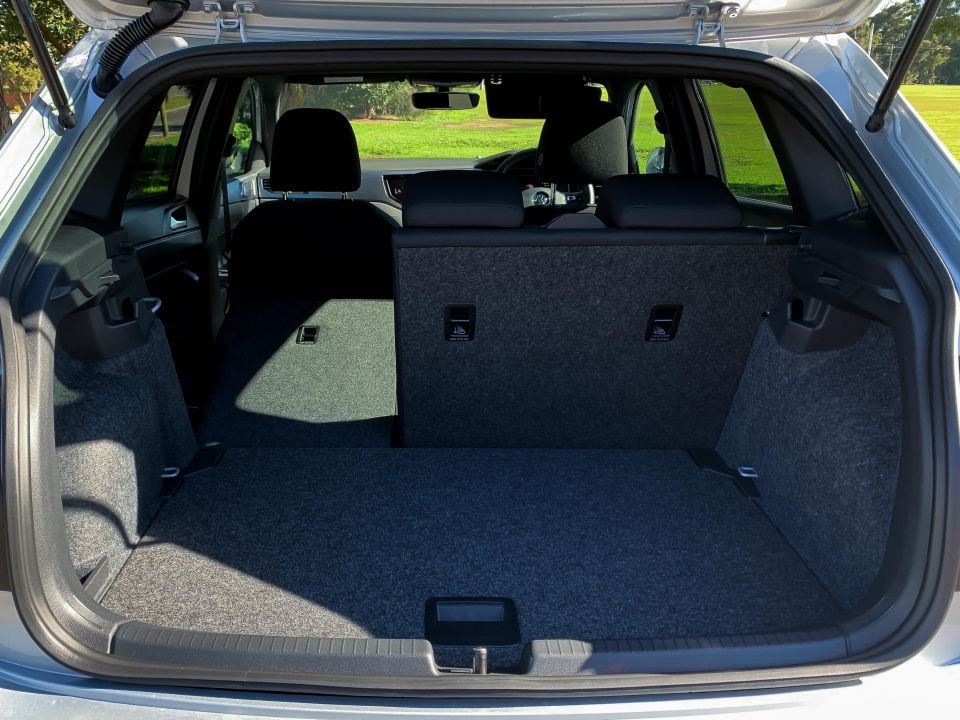
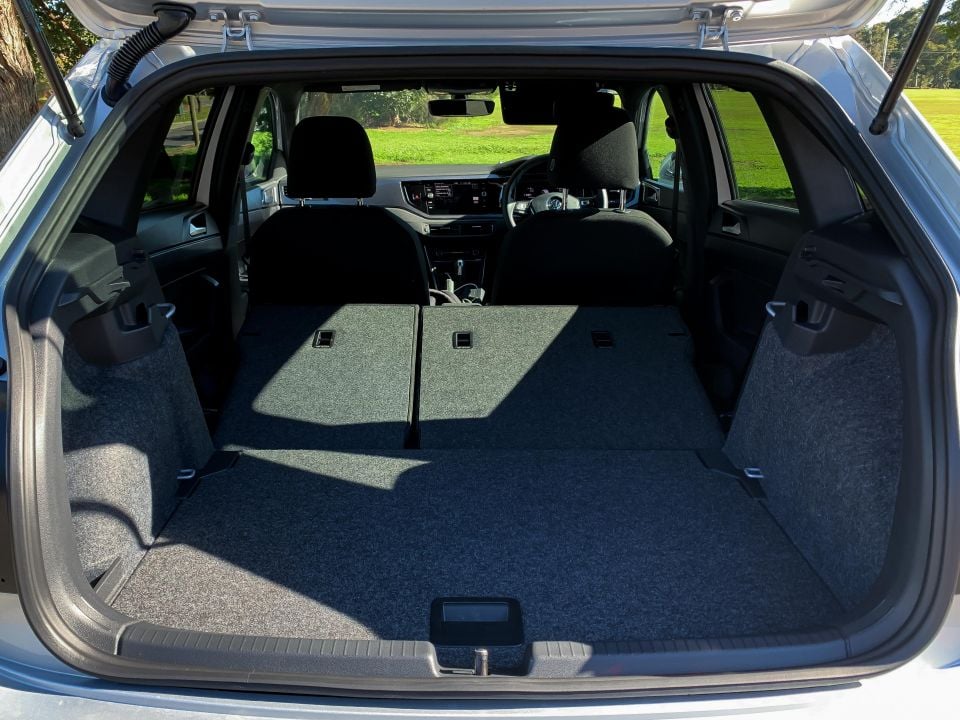
Further back there’s a 305L luggage area with the rear seats in place – note other Polo variants quote 351L as they are not specified with the 300W beats sound system which places the subwoofer in the underfloor storage area which would usually be the lower setting for the adjustable boot floor in other models.
With the second row of seats folded flat, the luggage area opens up to a healthy 1079L. Not bad for a little jigger.
On the topic of storage, the Volkswagen Polo is pretty well-equipped for a car of this size. There’s large pockets in the doors which will easily swallow large bottles and other loose items, the cubby under the centre stack where the Qi wireless charging pad is located offers space for the largest of smartphones (like my iPhone XS Max), and there’s a reasonably sized centre bin located between the front seats.
Ahead of that bin are two small (and oddly-shaped) cupholders, while rear seats get the aforementioned bottle holders in the doors and map pockets on the seat backs.
Overall the Polo impresses with its tech-laden, spacious cabin. The seats themselves are comfortable, the trims and materials used are attractive and of a good quality, and there’s plenty of room for people and their stuff.
That said, the Style grade’s price point may have potential buyers cross-shopping with low- to mid-spec versions of larger vehicles like its Golf stablemate or the Ford Focus. Both of those cars have nicer materials throughout their respective cabins and offer a fraction more space albeit with less features.
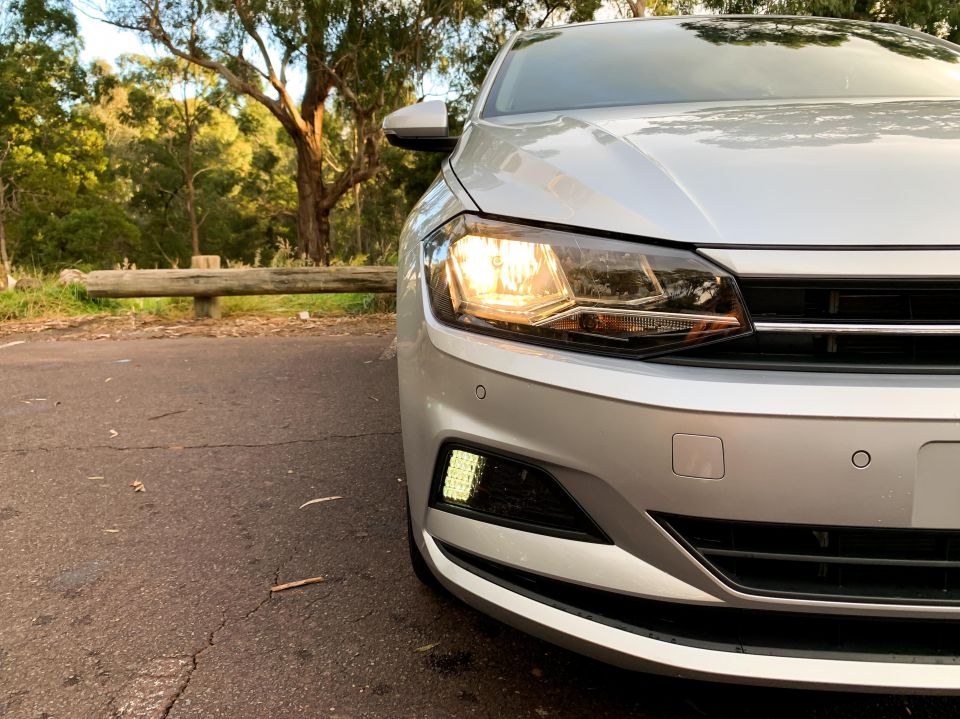
All versions of the non-performance Volkswagen Polo are powered by a 1.0-litre turbocharged three-cylinder petrol engine.
In the ’85TSI’ version, which powers the Polo Style and the mid-spec Comfortline, the three-pot petrol makes (you guessed it) 85kW of power at 5500rpm and a gutsy 200Nm of torque between 2000 and 3500rpm.
As standard, the Style specification channels drive to the front wheels via a seven-speed DSG automatic transmission.
Fuel consumption is rated at 5.0L/100km on the combined cycle.
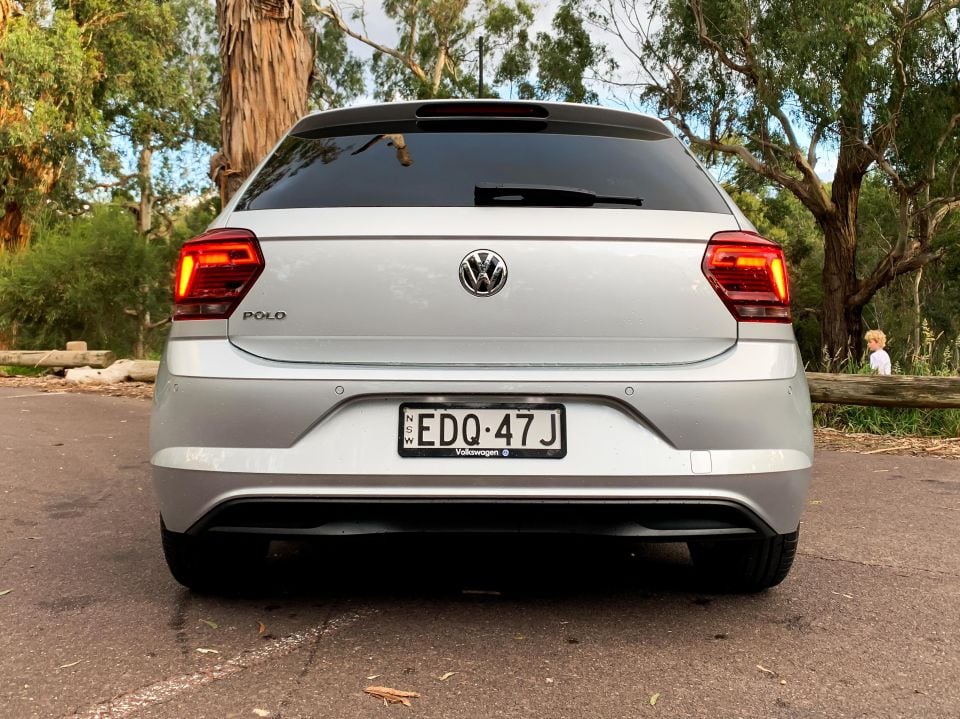
In terms of official performance figures, Volkswagen claims an adequate 9.5-second 0-100km/h dash. However, more realistic measures of the Polo’s performance are based around urban driving performance, which usually doesn’t get much higher than 70 or 80km/h.
From this angle, the Polo presents a bit of a mixed bag. Some may remember in a previous life I ran a Polo Launch Edition for three months as a long termer, and there were mixed reviews from colleagues about its drivability around town.
The most apparent and polarising aspect would be how the Polo takes off from a standstill, which can be inconsistent, lazy, and at times jerky.
A couple of factors play into this: typically dual-clutch transmissions don’t hook up as quickly as conventional automatics, and perform much like a manual off the line. The fact there’s a tiny turbocharged engine that doesn’t make peak torque until 2000rpm doesn’t help either.
Tie this in with idle stop/start technology, and it can be quite jarring. From the lights there’s what feels like a whole second between when the engine fires back up and the transmission gets the car moving again.
Then there’s how the transmission shifts as the speed climbs. At times it will rush out of first gear as soon as possible – first is almost just a launch gear in this application – which leaves you in second almost too early in a torque hole.
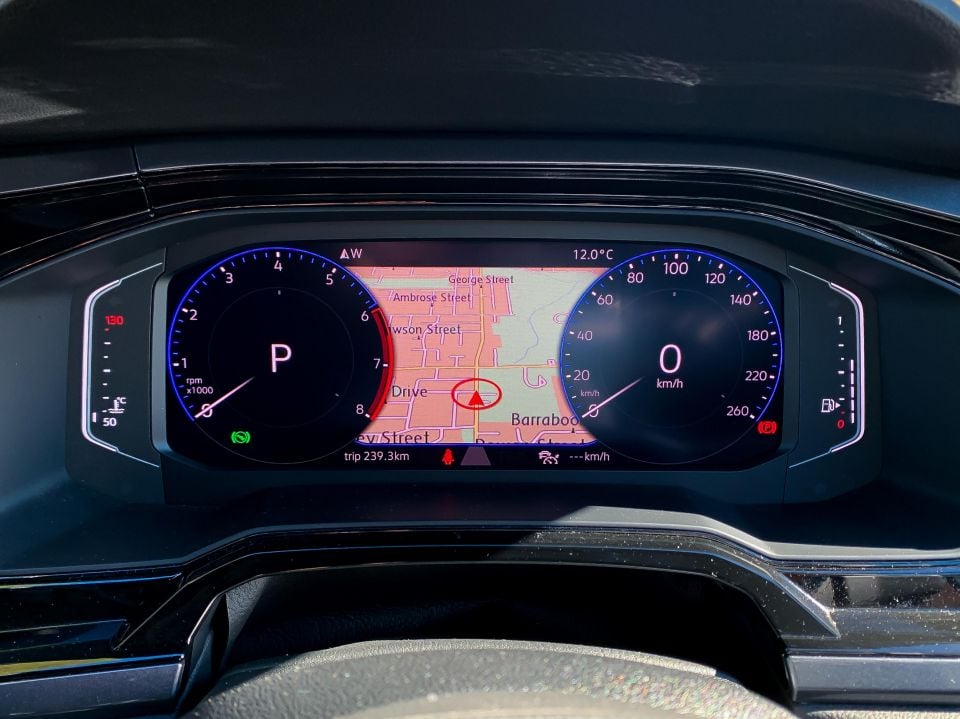


Once you’re moving, though, the Polo’s thrummy little engine and quick-shifting DSG are a snappy, smooth team which climb through ratios imperceptibly. It’s really cool to see the tachometer in the Active Info Display with its high refresh rate and smooth transitions as the needle flicks through the revs – it looks really high-end.
Once you hit that peak torque band the three-cylinder engine offers linear and muscular acceleration, emitting the charming gravelly note this engine configuration is known for. You don’t hear too much of it, though, because the Polo’s cabin is impressively quiet and refined on the move.
The seven-speed DSG is handy at higher speeds, shifting into the top ratio and dropping revs to around 2000rpm so you have maximum shove at your disposal should you need to need to make a quick squirt to overtake or make a gap in traffic.
It also means on the freeway the engine doesn’t feel or sound like it’s struggling, which can be a common occurrence in rival cars with naturally-aspirated engines and transmissions with fewer speeds. Unlike a lot of other vehicles in this class, the Polo is perfectly capable at highway cruising as well as the daily grind in town.
With that said, you can have the occasional instance where the DSG is in a high gear in the name of efficiency, and will take a moment or so to kick down a couple of gears when you’re rolling through a slip lane or coming around a roundabout.
From my experience, the best way around this is to adapt your throttle inputs. You may have to push a little harder on the pedal than you think you should, but the drivetrain will learn and you’ll get used to it as well.
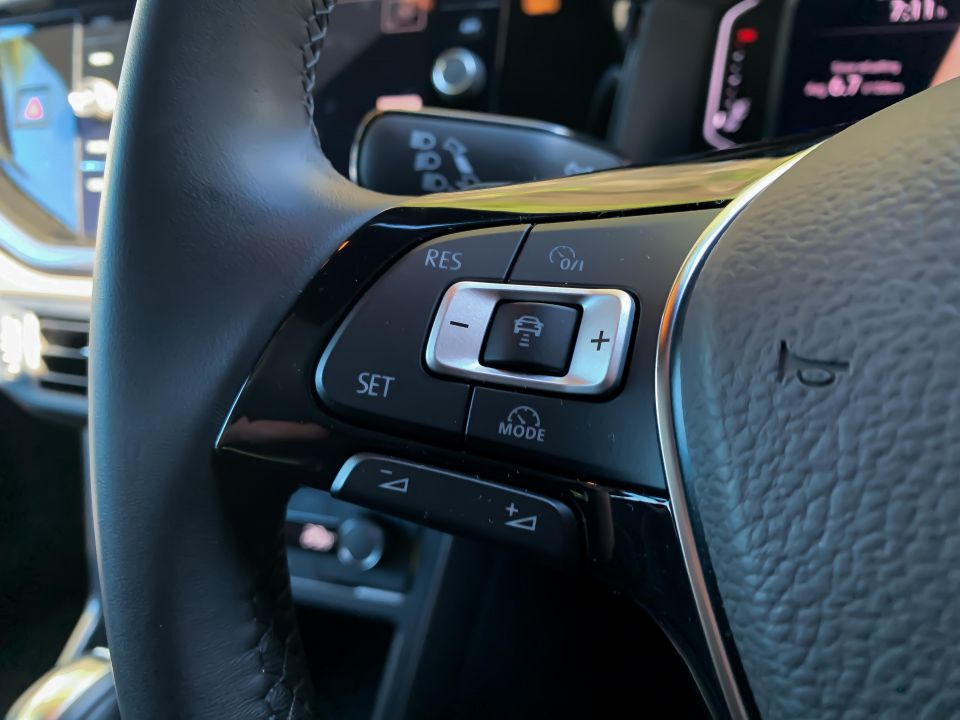
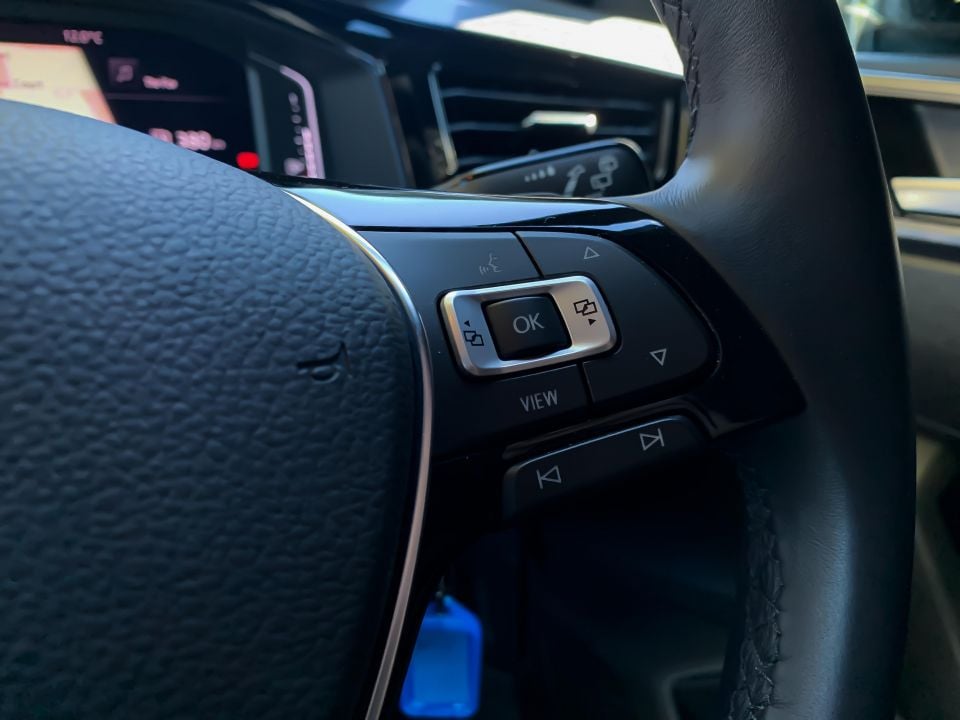
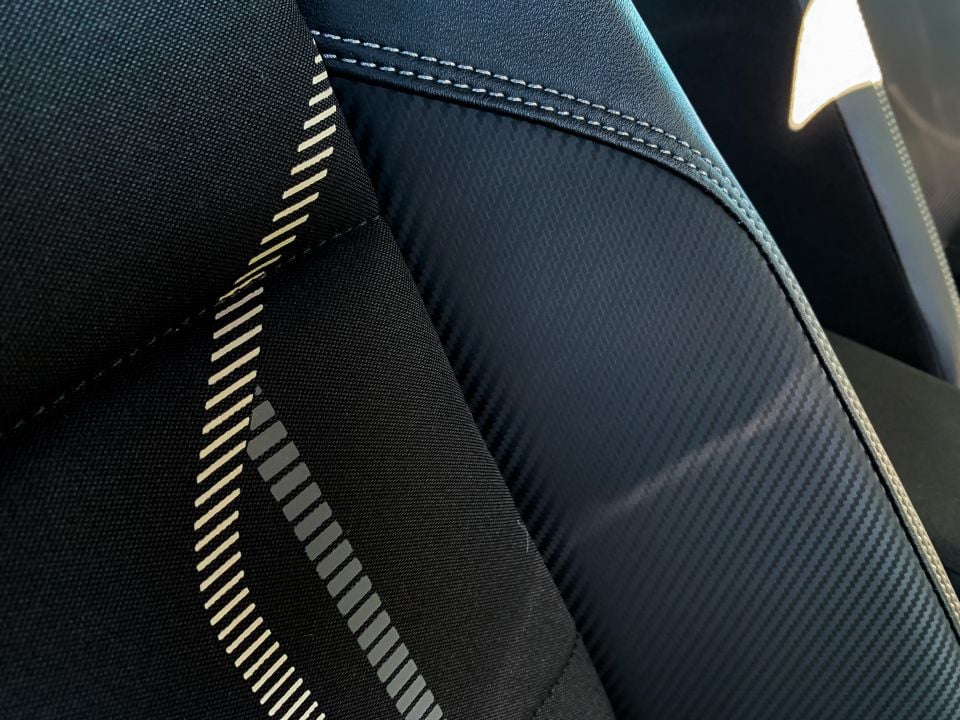
Where expert car reviews meet expert car buying – CarExpert gives you trusted advice, personalised service and real savings on your next new car.
In terms of dynamics the Polo Style maintains the maturity and refinement that has been a hallmark of this current generation. There’s a fluidity and predictability to the steering that just feels very nice, and it’s weighted perfectly to balance feedback and manoeuvrability.
There’s plenty of visibility all round too thanks to the large glasshouse, meaning you don’t have to rely just on the rear-view camera and sensors to see out of it. It’s deceptively small too, despite how big it is inside, so squeezing into small parking spaces or navigating narrow streets isn’t an issue at all.
The ride errs on the side of firm, but still does a great job of isolating the cabin (and your bum) from the array of lumps and bumps Melbourne’s road network will throw at you, and that’s even with the larger 16-inch wheels and 195/55 tyres of this model.
Out on the open road you’ll really appreciate the feeling of width and solidarity the new Volkswagen Polo offers thanks to its MQB A0 underpinnings. The road-holding ability and confidence this city car inspires at triple figures just isn’t matched by anything in the light car segment.
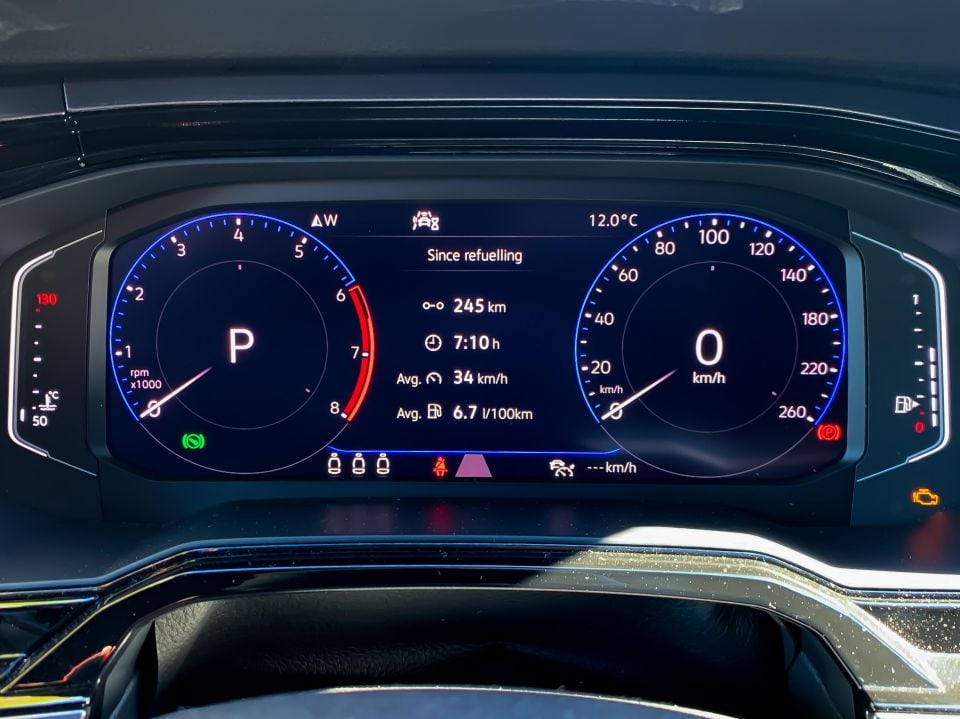
You’ll continue to be impressed when you hit the twisty stuff, too. The Polo corners well with limited body roll and direct steering, and the addition of paddle shifters on the style grade means you can flick through the gears yourself and really make the most out of that charming little engine.
Our tester’s optional driver assistance tech came in handy as well, namely the adaptive cruise control for extended freeway runs and the blind-spot monitoring system.
Like all Volkswagens sold from January 1, 2019, the Polo is covered by the brand’s five year, unlimited kilometre warranty with one year of complimentary 24-hour roadside assistance.
The roadside assist can be renewed each year provided you service your vehicle at an authorised Volkswagen dealer up until the vehicle is nine years old.
As for servicing, scheduled maintenance is required every 12 months or 15,000km – whichever comes first.
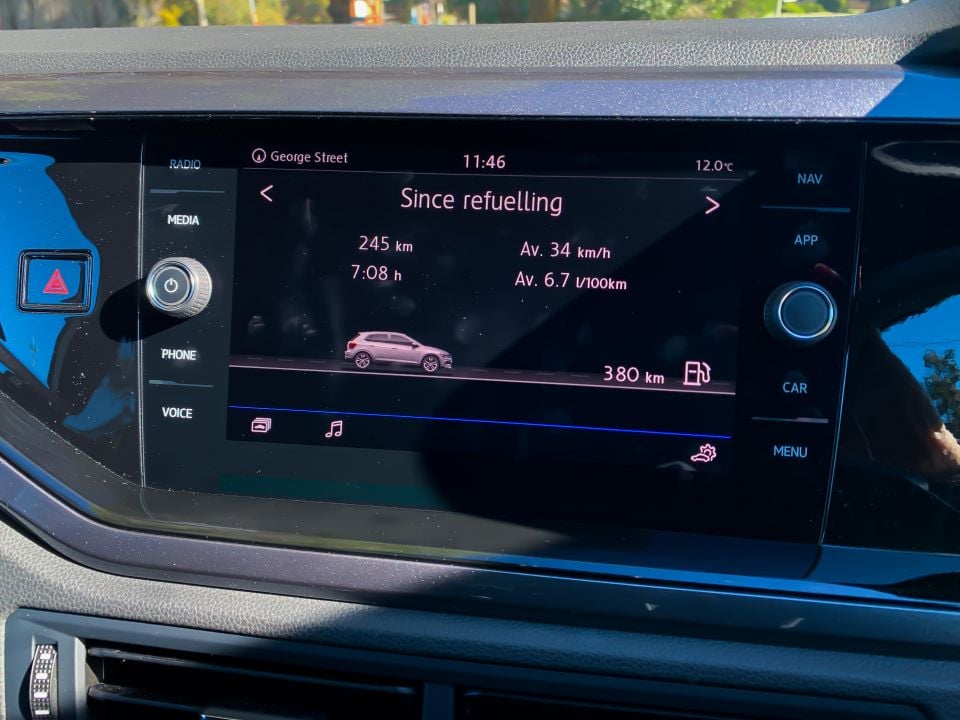
Volkswagen offers ‘Assured Price Servicing’ for the first 60 months or 75,000km, with the first three visits costing $332, $468 and $426. So, you can expect to pay a little over $1200 for servicing during the first three years of ownership.
Looking further for the remainder of the plan, and the next two visits are even more costly at $789 and $332.
As for real-world fuel consumption, we managed an indicated 6.5L/100km over a mix of urban and freeway driving during our week with the car, a little up on the manufacturer’s 5.0L/100km claim, meaning you can expect somewhere between 600 and 700km per fill of its 40L tank.
It’s also worth noting the Polo has a taste for more expensive 95 RON premium unleaded.

There’s no questioning the Volkswagen Polo 85TSI Style is a good car. In fact, it’s a very good car.
However, given the segment this car competes in, and the other vehicles you can buy at this price point, the Style’s case starts to fall a little.
If you want a Polo with all the fruit, and you’re willing to pay for it, the Style features pretty much all the best of what the local Polo range has to offer and can definitely duke it out with the best of the light car and small car segments in many ways.
That said, there’s quibbles like some of the cheap-feeling cabin trims, the drivetrain’s hesitation off the mark, and the $30,000 ticket that dent its appeal.
One can buy a Golf 110TSI Comfortline for a smidgen over $30,000 drive-away right now, which gets more power, more space, a nicer cabin, and similar equipment levels with higher-end options available. For me, it’s a no-brainer.
We believe the Polo is best served in 85TSI Comfortline trim (from $20,590 plus on-roads) as it offers the same refinement and practicality for a much more palatable price, and you can option the same driver assistance pack.
Still, the Volkswagen Polo really does cement itself as a leader in the light car segment, offering a combination of refinement, practicality and technology that is very hard to beat.
Where expert car reviews meet expert car buying – CarExpert gives you trusted advice, personalised service and real savings on your next new car.
James Wong is an automotive journalist and former PR consultant, recognised among Australia’s most prolific motoring writers.


William Stopford
15 Hours Ago


William Stopford
2 Days Ago


Damion Smy
6 Days Ago
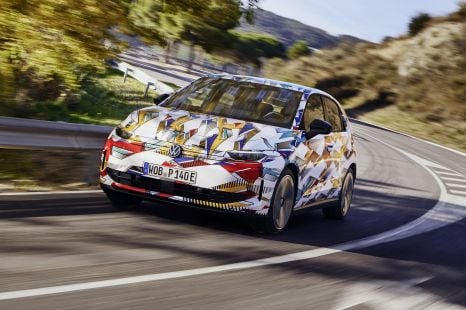

William Stopford
13 Days Ago
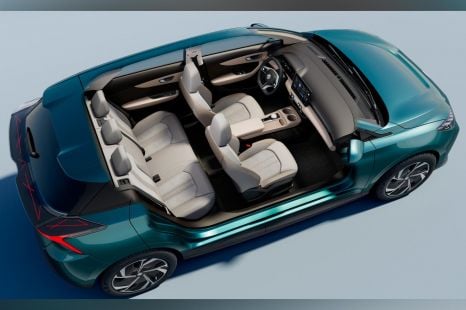

William Stopford
14 Days Ago
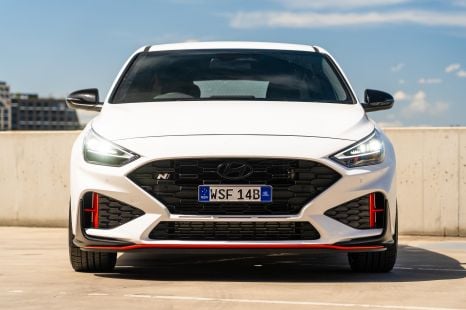

William Stopford
20 Days Ago